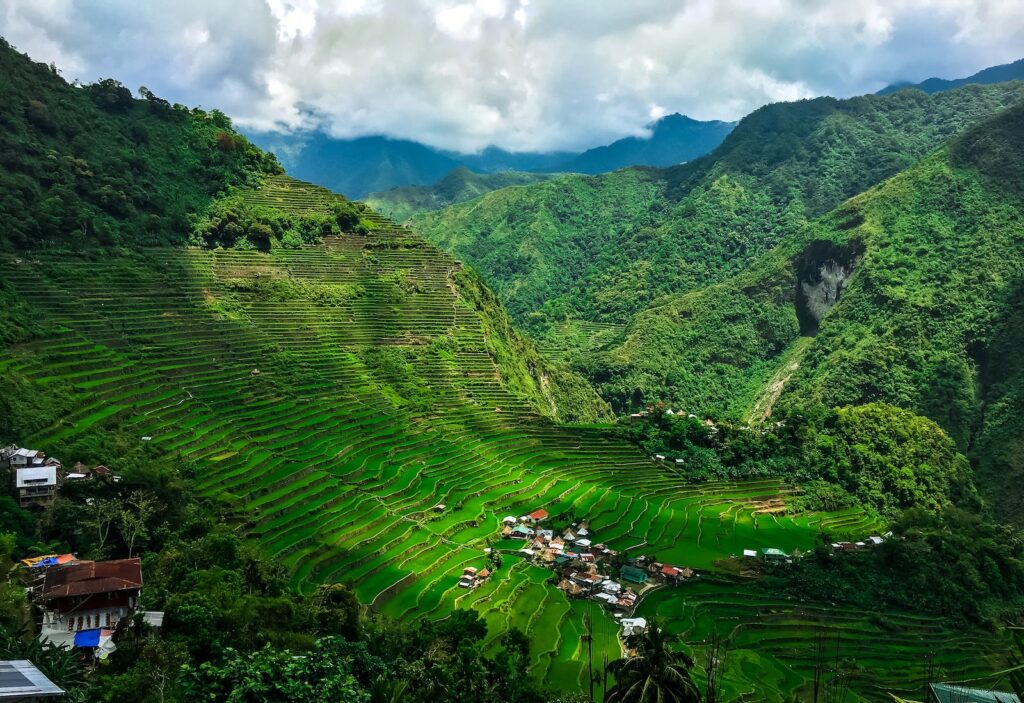1. Mt. Apo (Davao)
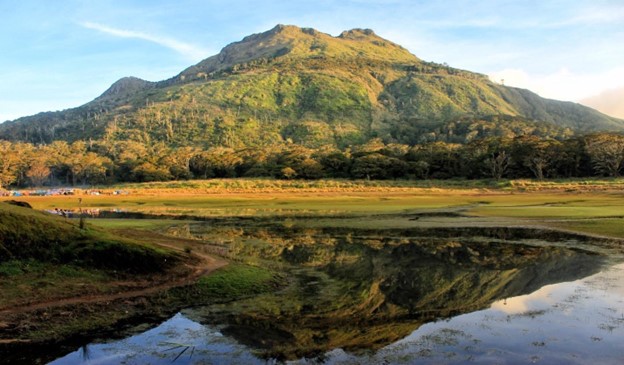
- Where: Davao del sur, Philippines
- Trail Head: Barangay Kapatagan, Digos City, Davao del Sur
- Distance & Type (point-to-point, circuit): 15 kilometers circuit
- Time Needed: 2-3 days.
- Difficulty: Difficult
- When to Hike: December to May
- Where to Stay: There are several options for accommodation near Mount Apo, including guesthouses, lodges, and campsites. The most popular campsites are the Lake Venado and the Kidapawan City Side.
Mount Apo is the highest mountain in the Philippines, standing at 2,954 meters above sea level. It is located in Mindanao, in the provinces of Davao del Sur and North Cotabato. The mountain is a popular destination for hikers, offering breathtaking views of its surrounding landscapes, including the nearby Lake Venado. The hike to the summit of Mount Apo is considered a challenging and rewarding experience, with diverse flora and fauna to see along the way. The mountain is also home to several indigenous tribes, including the Bagobo and Manobo people, who consider it a sacred site.
2. Mt. Pulag (Benguet)
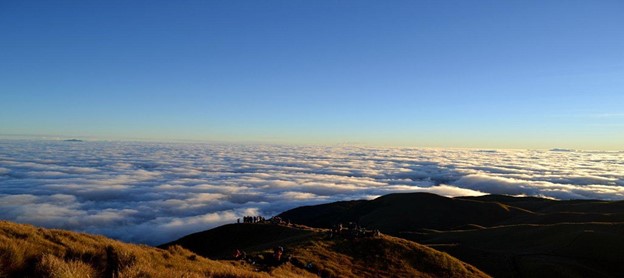
- Where: Benguet,Philippines
- Trail Head: Ambangeg Ranger Stn, Bokod, Benguet
- Distance & Type: 16 kilometers circuit
- Time Needed: 1-2 days.
- Difficulty: Easy-Moderate
- When to Hike: February to May
- Where to Stay: There are several options for accommodation near Mt. Pulag, including homestays, lodges, and campsites. The most popular campsites are the Baban’s Homestay, Campsite Babadak, and the Ranger Station.
Mt. Pulag is the third highest mountain in the Philippines, standing at 2,922 meters above sea level. It is known for its picturesque scenery, including the sea of clouds and the sunrise view from the summit. The mountain is located in Benguet province, in the northern part of Luzon Island. It is part of the Mount Pulag National Park, which is home to a diverse range of flora and fauna. The hike to the summit of Mt. Pulag is a popular activity for tourists and locals alike, offering a unique and challenging experience for hikers.
3. Mt. Pinatubo( Zambales)

- Where: Zambales, Philippines
- Trail Head: Sta. Juliana Tourism Office in Capas, Tarlac
- Distance & Type: 7 kilometers circuit
- Time Needed: 4-5 hours.
- Difficulty: Easy
- When to Hike: November to April
- Where to Stay: There are several options for accommodation near Mt. Pinatubo, including guesthouses, lodges, and campsites. Some popular accommodations include the Capas Base Camp and the Pinatubo Village Resort.
Mt. Pinatubo is an active stratovolcano located in the province of Zambales. It is known for its stunning crater lake and the ash clouds that it produced during its 1991 eruption, which was one of the most significant volcanic eruptions in the 20th century. The trek to Mt. Pinatubo’s summit is relatively easy, but it still offers scenic views of the surrounding landscapes, including the lahar canyons and the Aeta indigenous community. The trek usually takes around 2-3 hours to complete, and it is a popular activity for tourists and locals alike. The Crater Lake at the summit is an impressive sight, with its turquoise waters and surrounding mountains.
4. Mt. Halcon (Oriental Mindoro)

- Where: Oriental Mindoro, Philippines
- Trail Head: Baco, Oriental Mindoro
- Distance & Type: 18 kilometers circuit
- Time Needed: 2-3 days.
- Difficulty: Difficult
- When to Hike: November to April
- Where to Stay: There are several options for accommodation near Mt. Halcon, including homestays and campsites. Some popular accommodations include the Bayanan Homestay and the Halcon Base Camp.
Mt. Halcon is the highest peak in Oriental Mindoro and is known for its rugged and challenging terrain. The trek to the summit is considered to be one of the most difficult hikes in the Philippines, with steep and slippery ascents, river crossings, and dense forests. The trail is not well-marked and requires the services of an experienced guide. Despite the challenging trek, the summit of Mt. Halcon offers breathtaking views of the surrounding landscapes, including the Mindoro Strait, the Verde Island Passage, and the nearby peaks of Mt. Baco and Mt. Malasimbo. The trek to Mt. Halcon’s summit requires preparation, including physical training, proper gear, and provisions for camping.
5. Mt. Guiting-Guiting (Romblon)
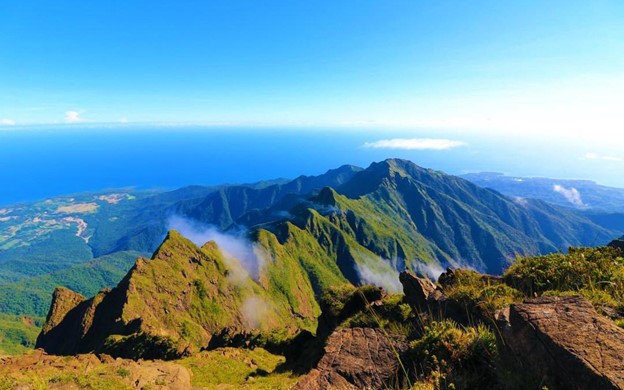
- Where: Romblon, Philippines
- Trail Head: Sitio Olango, San Fernando, Sibuyan Island, Romblon
- Distance & Type: 20 kilometers circuit
- Time Needed: 3 days.
- Difficulty: Difficult
- When to Hike: November to April
- Where to Stay: There are several options for accommodation near Mt. Guiting-Guiting, including homestays and campsites. Some popular accommodations include the Denr Station Campsite and the Olango River Campsite.
Mt. Guiting-Guiting is one of the highest peaks in the Philippines and is known for its rugged and challenging terrain. The trek to the summit is one of the most difficult hikes in the country, with steep and slippery ascents, river crossings, and dense forests. The trail is not well-marked and requires the services of an experienced guide. Despite the challenging trek, the summit of Mt. Guiting-Guiting offers breathtaking views of the surrounding landscapes, including the Sibuyan Sea, neighboring islands, and nearby peaks. The trek to Mt. Guiting-Guiting’s summit requires preparation, including physical training, proper gear, and provisions for camping.
6. Mt. Dulang-dulang (Bukidnon)
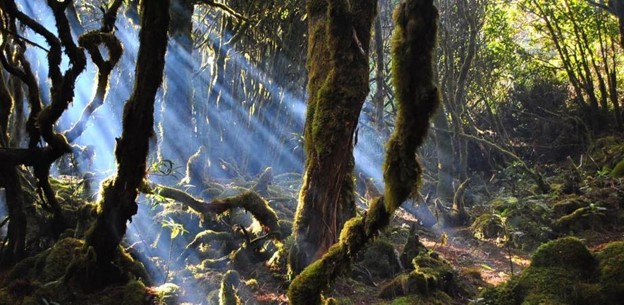
- Where: Bukidnon, Philippines
- Trail Head: Sitio Bol-ogan, Brgy. Songco, Lantapan
- Distance & Type: 35 kilometers circuit
- Time Needed: 2-3 days.
- Difficulty: Difficult
- When to Hike: November to May
- Where to Stay: There are several options for accommodation near Mt. Dulang-dulang, including homestays and campsites. Some popular accommodations include the DENR station in Barangay Lantapan and the Kitanglad Agro-Eco Farm and Resort.
Mt. Dulang-dulang is the second-highest peak in the Philippines, located in the Kitanglad Mountain Range in Bukidnon. The trek to the summit of Mt. Dulang-dulang is known for its stunning views of the surrounding landscapes, including the lush forests, grasslands, and mountain ranges. The trek is challenging, with steep ascents, river crossings, and dense forests. The trail is not well-marked, and it is recommended to hire a local guide to ensure a safe and enjoyable experience. Along the way, hikers can also see different plant and animal species, including endemic ones. The trek to Mt. Dulang-dulang’s summit requires preparation, including physical training, proper gear, and provisions for camping. It is recommended to plan the hike in advance and coordinate with the local authorities to obtain necessary permits and guides.
7. Mt. Kitanglad (Bukidnon)

- Where: Bukidnon, Philippines
- Trail Head: Sitio Intavas, Barangay Dalwangan, Malaybalay City, Bukidnon
- Distance & Type: 20 kilometers circuit
- Time Needed: 2-3 days
- Difficulty: Moderate
- When to Hike: November to May
- Where to Stay: There are several options for accommodation near Mt. Kitanglad, including homestays and campsites. Some popular accommodations include the Sitio Intavas Campsite and the Kitanglad Integrated NGOs’ Eco-Tourism (KINETO) Campsite.
Mt. Kitanglad is a mountain range located in Bukidnon and is considered one of the country’s most important conservation areas. The trek to the summit of Mt. Kitanglad is known for its stunning views of the surrounding landscapes, including the lush forests, grasslands, and mountain ranges. The trail to the summit is relatively easy to navigate, and there are several campsites along the way. Along the way, hikers can also see different plant and animal species, including endemic ones. The trek to Mt. Kitanglad’s summit requires preparation, including physical training, proper gear, and provisions for camping. It is recommended to plan the hike in advance and coordinate with the local authorities to obtain necessary permits and guides. The mountain is also considered sacred by the indigenous Bukidnon people, and hikers are encouraged to respect the local culture and traditions.
8. Mt. Kabunian (Benguet)

- Where: Benguet, Philippines
- Trail Head: Bokod, Benguet
- Distance & Type: 20 kilometers circuit
- Time Needed: 2-3 days.
- Difficulty: Difficult
- When to Hike: November to May
- Where to Stay: There are several options for accommodation near Mt. Kabunian, including homestays and campsites. Some popular accommodations include the Homestay at the town of Bokod and the Pulag Ventures and Tours homestay.
Mt. Kabunian is a mountain located in Benguet and is considered one of the country’s most challenging hikes. The trek to the summit of Mt. Kabunian is known for its rugged and steep terrain, including rock formations and sharp cliffs. The trail to the summit is challenging to navigate and requires experience in mountaineering. Along the way, hikers can also see different plant and animal species, including endemic ones. The trek to Mt. Kabunian’s summit requires preparation, including physical training, proper gear, and provisions for camping. It is recommended to plan the hike in advance and coordinate with the local authorities to obtain necessary permits and guides. The mountain is also considered sacred by the indigenous Kankana-ey people, and hikers are encouraged to respect the local culture and traditions.
9. Mt. Kanlaon (Negros)
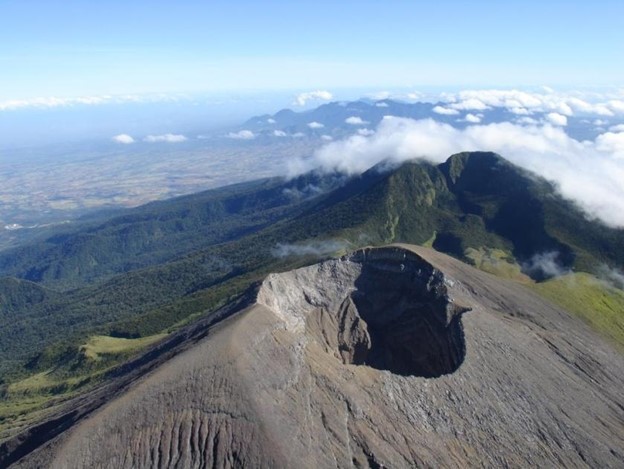
- Where: Negros Occidental, Philippines
- Trail Head: Barangay Mapot, La Castellana, Negros Occidental
- Distance & Type: 32 kilometers circuit
- Time Needed: 2-3 days.
- Difficulty: Difficult
- When to Hike: November to May
- Where to Stay: There are several options for accommodation near Mt. Kanlaon, including homestays and campsites. Some popular accommodations include the Kanlaon National Park Visitor Center and the Mambucal Resort.
Mt. Kanlaon is an active volcano located in Negros Island and is the highest peak in Central Visayas. The trek to the summit of Mt. Kanlaon is known for its rugged and steep terrain, including rock formations and sulfuric vents. The trail to the summit is challenging to navigate and requires experience in mountaineering. Along the way, hikers can also see different plant and animal species, including endemic ones. The trek to Mt. Kanlaon’s summit requires preparation, including physical training, proper gear, and provisions for camping. It is recommended to plan the hike in advance and coordinate with the local authorities to obtain necessary permits and guides. The mountain is also considered sacred by the local communities, and hikers are encouraged to respect the local culture and traditions.
10. Osmeña Peak (Cebu)

- Where: Cebu, Philippines
- Trail Head: Mantalongon, Dalaguete, Cebu
- Distance & Type: 1 kilometer circuit
- Time Needed: 30-45 minutes
- Difficulty: Easy
- When to Hike: November to May
- Where to Stay: There are several options for accommodation near Osmeña Peak, including homestays, guesthouses, and resorts. Some popular accommodations include the Obong Spring Resort and the Mountain View Nature’s Park.
Osmeña Peak is the highest peak in the province of Cebu and offers stunning panoramic views of the surrounding landscape. The trek to the summit of Osmeña Peak is a relatively easy hike, suitable for beginners and families with children. The trail is well-established and easy to navigate, and the terrain consists of grassy hills with some rocky outcrops. Along the way, hikers can also see different plant and animal species, including endemic ones. The trek to Osmeña Peak’s summit is a popular activity for tourists visiting Cebu, and it is also a popular spot for camping and stargazing. The peak is named after the Osmeña family, a prominent political family in the Philippines. It is recommended to bring warm clothing as the temperature can drop significantly at night.

